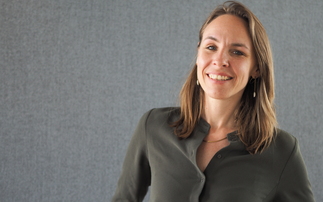Danish engineering firm Danfoss is working to save energy at every level of its business
In 2015, the world signed up to a target to double its rate of improvement in energy efficiency by 2030, as part of the UN goal for universal, sustainable access to energy.
This subtarget means an improvement rate of around 2.7 per cent per year. But a major report last week found the world fell shy of this in 2016, with an improvement rate of 2.5 per cent. Even worse, further declines are likely to have taken place in 2017 and 2018, with the rate of improvement in 2018 thought to be just 1.3 per cent.
As the report sagely noted, "more needs to be done". Increasing energy efficiency reduces energy demand, cuts emissions and eases the pressure slightly on the required scale up of renewables. It can also lead to significant cost savings for both businesses and individuals. It is a no-brainer in the world of climate action.
But one of the troubles with it is that solutions are often highly technical, making them harder to intuitively understand off the bat than, say, solar power. The energy efficiency target is "the [one] that's never discussed first but should be", Rachel Kyte, chief executive of Sustainable Energy For All (SEforAll), told BusinessGreen recently.
However, some companies are definitely not missing the boat. Danish engineering giant Danfoss, for instance, is putting an increasingly key focus on energy efficiency in its whole business.
Moving energy
Danfoss has a myriad of technologies all linked in some way to its core business of "moving something energy-wise", says Julia Panzer, head of public affairs and sustainability at Danfoss. These range from parts for refrigeration, air conditioning and heating equipment, to solar and wind power modules as well as its district energy business.
But although it may specialise in moving energy, a large number of its technologies involve reducing energy consumption and emissions, she notes.
One important way Danfoss reduces consumption is by deploying integrated energy control systems, says Panzer. For example, its 'Smart Store' system can cut energy consumption in a supermarket up to half, by fusing refrigeration, temperature control and lighting in a smart, connected way. For instance, heat produced by refrigerators can be used for heating in supermarkets, avoiding new energy use for heating.
Danfoss also helps supermarkets replace synthetic refrigerants such as HCFCs with natural or synthetic refrigerants with a lower global warming impact. Project Drawdown, which charts ways to cut down greenhouse gas emissions, chose such refrigerant management as the top global solution for curbing climate change.
Chasing the megatrends
Danfoss says its business model now links to five "global megatrends" which "change the way we do business": climate change, digitalisation, food supply, urbanisation and electrification.
One good example of how it is targeting these trends is its Turbocor compressors, used in cooling technology such as fridges and air conditioners.
There are already more than 1.1 billion people globally who face immediate risks from lack of access to cooling, a recent SEforAll report found. For those most vulnerable, cooling technology will be one of the first items on a shopping list of power products, Panzer warns. "If you look at the projections of people that are not connected [to the grid],they might buy as a first thing a fridge or an air conditioner when they get connected: it is an essential development tool."
But with air conditioning and refrigeration together already responsible for around eight per cent of CO2 emissions globally, such a buying spree will lead to a further rise in greenhouse gas emissions.
That's where Danfoss' Turbocor compressor technology comes into play, Panzer says. Compressors are a key part of refrigeration technology, pressurising refrigerant vapour to a liquid which can flow round the fridge. Danfoss' compressor reduces energy consumption up to 40 per cent compared to traditional technology, says the firm, and shows no degradation of performance over its lifetime.
The compressor was named as one of the top 1,000 solutions for protecting the environment earlier this month by the Solar Impulse Foundation (Danfoss now has three products with the endorsement).
Internal goals and supply chain challenges
As well as focussing on how its technologies can promote energy savings for customers, Danfoss has two main 2030 climate goals for its own operations. Set out last year, these target a halving of the energy intensity of its operations compared to 2007 levels, and a halving of the CO2 intensity of the remaining energy used.
By 2018 Danfoss had reduced its energy intensity by 43 per cent and its CO2 intensity by 25 per cent. But the global nature of the firm illustrates some of the challenges it faces in closing the remaining gap. For example, Danfoss' CO2 intensity didn't fall at all between 2017 and 2018, because of increasing electricity consumption in countries with high-carbon electricity supply. In fact, its CO2 emissions increased by eight per cent between 2017 and 2018.
Emissions from its 3,500 suppliers are also around 3.5 times those associated with the firm's own energy consumption. Danfoss is making efforts to tackle this, it says, such as through its factory in Chennai, India, which now sources much of its power from solar panels installed on its roof as well as a private wind company. But there is still a long way to go.
Meanwhile, it's also working to engage its customers on the topic of energy efficiency, says Panzer. Being clear about its commitment to SDG7 has helped guide the firms to which it supplies technology parts, she explains. "A lot of customers need that signal to know where we are going, and to start manufacturing their own products in a more sustainable way, which is already possible," she says.
Since its founding in the 1930s with a sole focus on refrigeration, Danfoss has turned into a global engineering giant, now boasting around 28,000 employees, 23 R&D sites, 71 factories and a wide array of technologies. But the mentality of its founder, engineer Mads Clausen, is still shaping the DNA of the firm, says Panzer.
"He was kind of the guy that said, well if others can do it so can we, but if others can't we still have a chance," she says. As the world strives to find ways to increase its energy efficiency in line with its clean energy ambitions, this mentality remains as relevant as ever.







